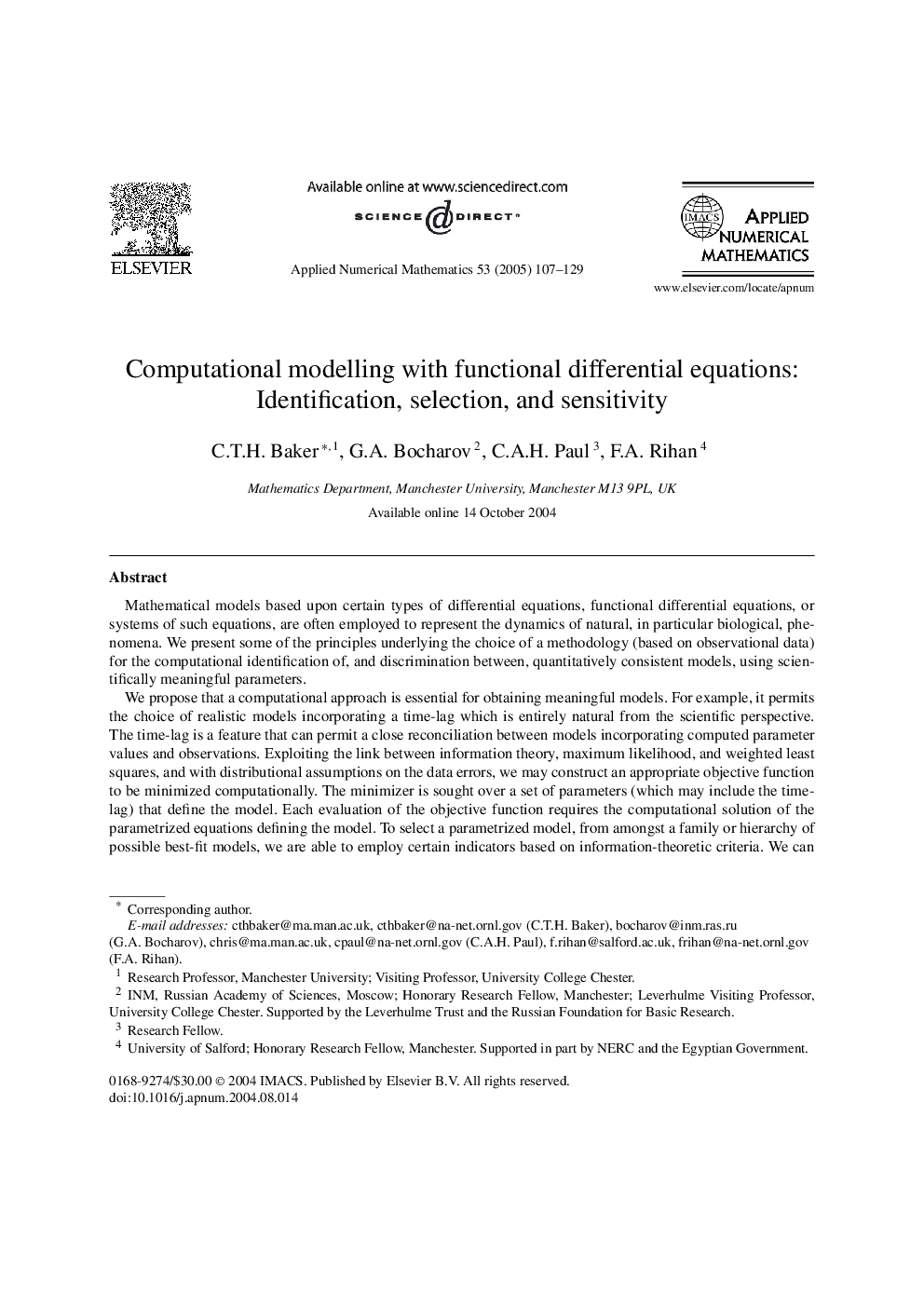| Article ID | Journal | Published Year | Pages | File Type |
|---|---|---|---|---|
| 9511587 | Applied Numerical Mathematics | 2005 | 23 Pages |
Abstract
We propose that a computational approach is essential for obtaining meaningful models. For example, it permits the choice of realistic models incorporating a time-lag which is entirely natural from the scientific perspective. The time-lag is a feature that can permit a close reconciliation between models incorporating computed parameter values and observations. Exploiting the link between information theory, maximum likelihood, and weighted least squares, and with distributional assumptions on the data errors, we may construct an appropriate objective function to be minimized computationally. The minimizer is sought over a set of parameters (which may include the time-lag) that define the model. Each evaluation of the objective function requires the computational solution of the parametrized equations defining the model. To select a parametrized model, from amongst a family or hierarchy of possible best-fit models, we are able to employ certain indicators based on information-theoretic criteria. We can evaluate confidence intervals for the parameters, and a sensitivity analysis provides an expression for an information matrix, and feedback on the covariances of the parameters in relation to the best fit. This gives a firm basis for any simplification of the model (e.g., by omitting a parameter).
Keywords
Related Topics
Physical Sciences and Engineering
Mathematics
Computational Mathematics
Authors
C.T.H. Baker, G.A. Bocharov, C.A.H. Paul, F.A. Rihan,
